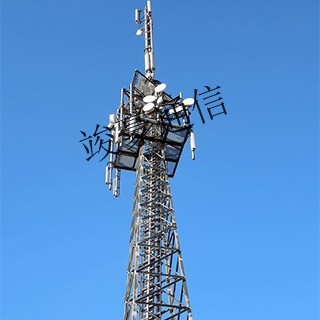Under the current political situation, the multi-faceted transformation of communication towers
Introduction: The Remarkable "Connection" Between Communication Towers and Politics
In modern society, communication towers are ubiquitous, standing like silent guardians atop urban skyscrapers, in rural fields, and even on remote mountain peaks. Their presence ensures uninterrupted mobile signals, allowing us to make calls, browse the internet, watch videos, and enjoy the conveniences of the information age anytime, anywhere. Whether in bustling city streets or quiet rural corners, communication towers support our connectivity needs and have become an indispensable part of modern life.
But have you ever considered that these seemingly ordinary towers are intricately linked to political news? Changes in policies and global events, though seemingly distant from communication towers, subtly influence their construction, operation, and development. What stories lie behind this connection? Let’s lift the veil and explore the mysteries between political currents and communication towers.
Policy Tailwinds: Accelerating the Construction of Communication Towers
Amid the national push for digital economic development, a series of favorable policies have emerged as powerful drivers for communication tower construction. For instance, documents issued by the Ministry of Industry and Information Technology and other departments explicitly designate 5G base station construction as a key task, urging accelerated 5G network deployment. These policies provide clear direction and robust support for tower construction.
In terms of land use, local governments have actively responded by incorporating tower construction into land-use planning, prioritizing land allocation for base stations. Some cities have streamlined approval processes, reducing the time required for permits. For example, in one city, approval times for tower projects have been cut from several months to as little as one month, significantly improving efficiency.
Collaboration among departments has also been encouraged, creating green channels for tower construction. Housing, environmental protection, and power sectors have simplified approval procedures to expedite projects. For 5G towers, joint approval mechanisms have consolidated previously fragmented processes into "one-stop" services, enabling rapid deployment and allowing more regions to benefit from 5G connectivity.
Regional 5G plans reflect local characteristics. Developed areas like the Yangtze and Pearl River Deltas aim for ultra-fast 5G coverage in urban cores, upgrading technology to meet demands for high-speed, stable networks. Meanwhile, remote regions focus on expanding coverage, bridging the digital divide through policy support, and ensuring rural and mountainous areas enjoy the benefits of the digital era.
The Whirlpool of Public Opinion: Communication Towers in Crisis
In an era of rapid information dissemination, misinformation can unleash unexpected crises for communication towers. The "5G causes COVID-19" rumor is a prime example.
During the pandemic, this baseless claim spread like wildfire on social media, sparking widespread panic. In the UK, some citizens, swayed by the rumor, attacked 5G towers. Reports indicate that at least 20 base stations were vandalized or set ablaze in Birmingham and Merseyside, disrupting local networks. Similar incidents occurred in the Netherlands, where six towers were torched in Groningen within a week.
India also fell victim to the rumor. Over 20 towers were destroyed in Punjab in three weeks, hampering maintenance and new construction efforts. These acts of vandalism not only caused physical damage but also cast a shadow over the industry’s growth.
Misinformation has multifaceted impacts. Construction faces delays as communities resist tower installations due to unfounded health concerns, even when scientific evidence disproves risks. Operational costs soar as repairs and security measures escalate, dampening investor confidence and slowing industry progress.
In response, governments, scientists, and telecom operators have taken action. Authorities debunked the rumors, emphasizing no link between 5G and COVID-19. Scientists explained the technology’s safety, while operators ramped up public education and tower security to dispel myths.
Emergency Response: The Critical Role of Communication Towers
During natural disasters or public health crises, communication towers become lifelines, ensuring connectivity for rescue operations and information dissemination.
In earthquakes, towers prove indispensable. For example, after a 6.0-magnitude quake struck Sichuan in 2019, damaged towers were swiftly restored, enabling rescue coordination and emergency communications for affected residents.
During the COVID-19 pandemic, towers supported telemedicine, online education, and outbreak tracking. In Wuhan, rapid tower installations at makeshift hospitals ensured stable networks for medical staff and data transmission. Towers also aided contact tracing, helping curb the virus’s spread.
In floods and typhoons, towers withstand harsh conditions, with crews working tirelessly to restore services, proving vital for disaster recovery.
A New Chapter: The Transformation of Communication Towers
Amid digital transformation, towers are evolving from mere communication hubs to multifunctional "digital towers" and "social towers," driven by political strategies.
China Tower exemplifies this shift. Under national initiatives like "Network Power" and "Digital China," it integrates towers with cutting-edge technologies. In environmental protection, "Tower + 5G + AI" monitors forests and grasslands in Inner Mongolia, while in the Yangtze River, towers enforce fishing bans with high-altitude surveillance.
In transportation, towers power smart road networks, enabling real-time monitoring and emergency management across multiple provinces. For smart cities, towers blend seamlessly with urban landscapes, as seen in Shanghai, where historic cranes house base stations, and 660 video surveillance points serve over 30 industries.
These cases highlight how political-driven upgrades unlock new opportunities, transforming towers into pillars of digital innovation and social governance.
Conclusion and Outlook: The Future of Communication Towers
Political currents profoundly impact communication towers. Policies fuel rapid deployment, misinformation spurs public education, emergencies underscore their indispensability, and digital trends redefine their roles.
Looking ahead, advancements in 5G/6G and smart city initiatives will bring more opportunities. Towers will grow smarter, more energy-efficient, and versatile, supporting sectors like logistics, healthcare, and virtual reality. Their role in governance and environmental protection will expand, cementing their status as vital infrastructure.
The evolution of communication towers is not just an industry matter—it touches everyone’s life. Let’s stay engaged, foster a supportive environment, and witness their continued innovation in shaping a better digital world.




